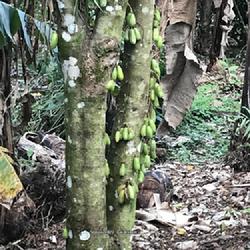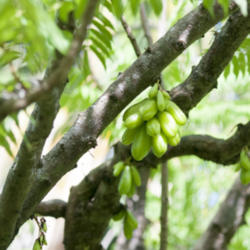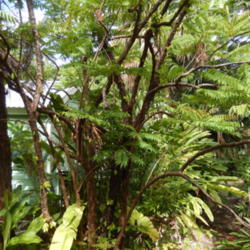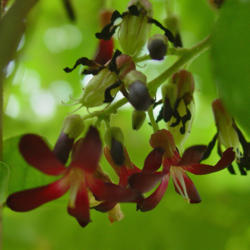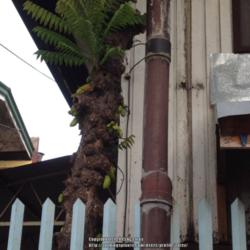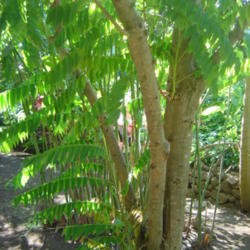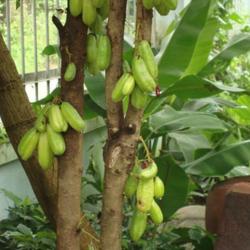| Plant Habit: | Tree |
| Life cycle: | Perennial |
| Sun Requirements: | Full Sun Full Sun to Partial Shade |
| Water Preferences: | Mesic Dry Mesic |
| Minimum cold hardiness: | Zone 10b +1.7 °C (35 °F) to +4.4 °C (40 °F) |
| Plant Height: | 15 to 35 feet |
| Plant Spread: | 10 to 12 feet |
| Fruiting Time: | Late winter or early spring Spring Late spring or early summer Summer Late summer or early fall Fall Late fall or early winter |
| Flowers: | Showy Fragrant Blooms on old wood |
| Flower Color: | Purple |
| Bloom Size: | Under 1" |
| Flower Time: | Late winter or early spring Spring Late spring or early summer Summer Late summer or early fall Fall Late fall or early winter |
| Underground structures: | Taproot |
| Suitable Locations: | Patio/Ornamental/Small Tree |
| Uses: | Flowering Tree |
| Edible Parts: | Fruit Flowers |
| Eating Methods: | Tea Culinary Herb/Spice Raw Cooked Fermented |
| Toxicity: | Other: Parts of plant contain high concentrations of oxalic acid; consume in moderation. |
| Containers: | Suitable in 3 gallon or larger |
